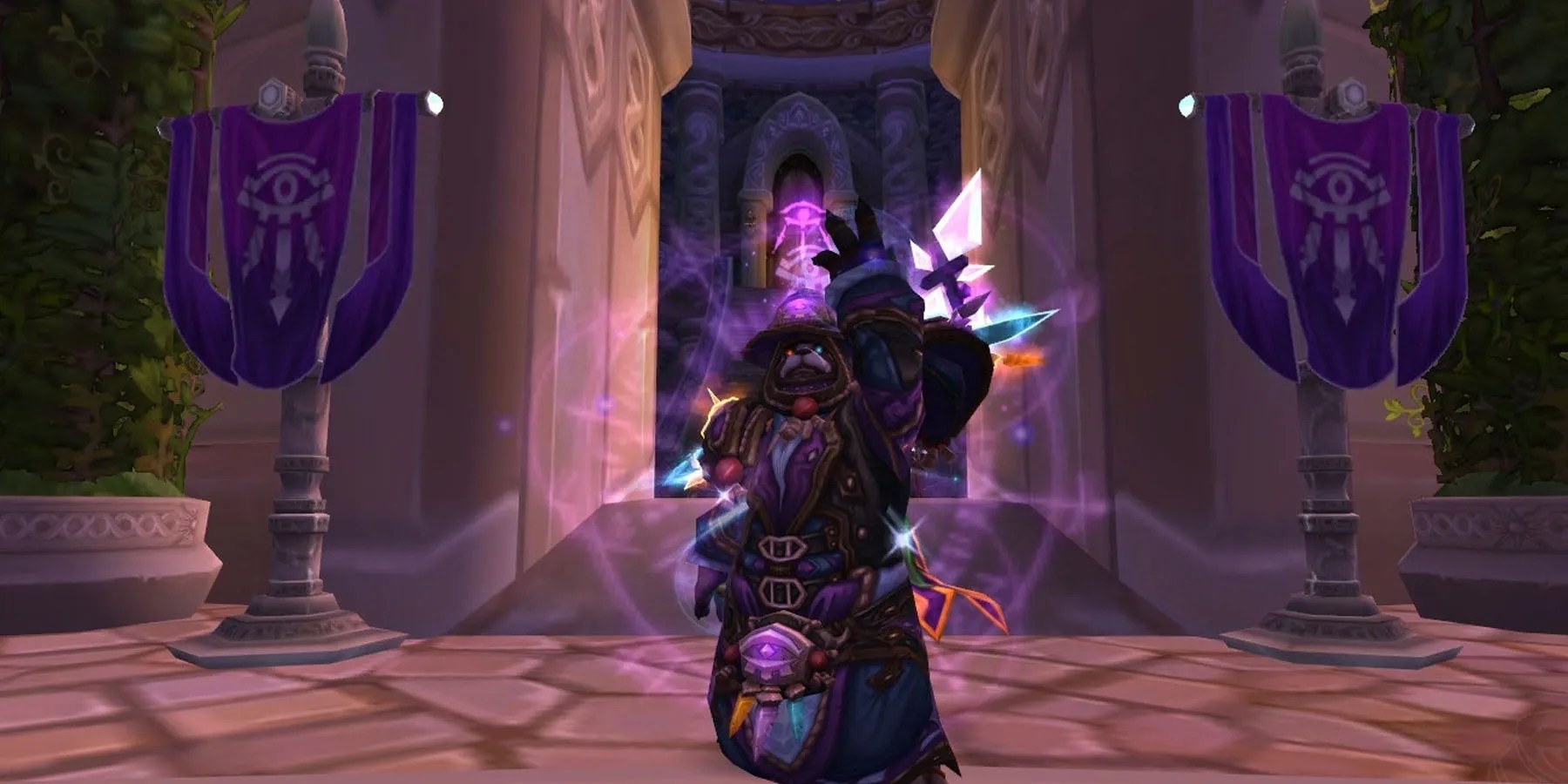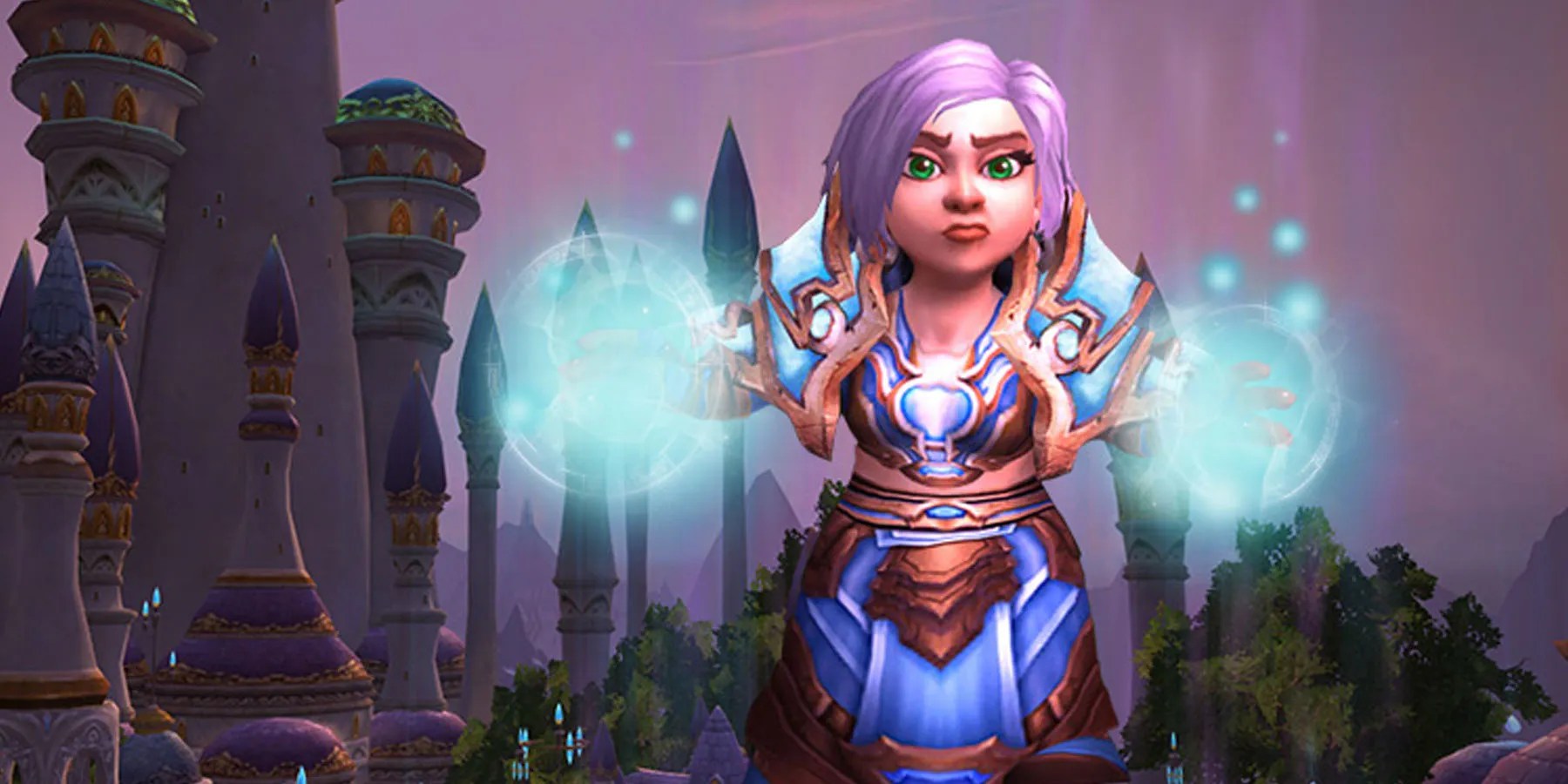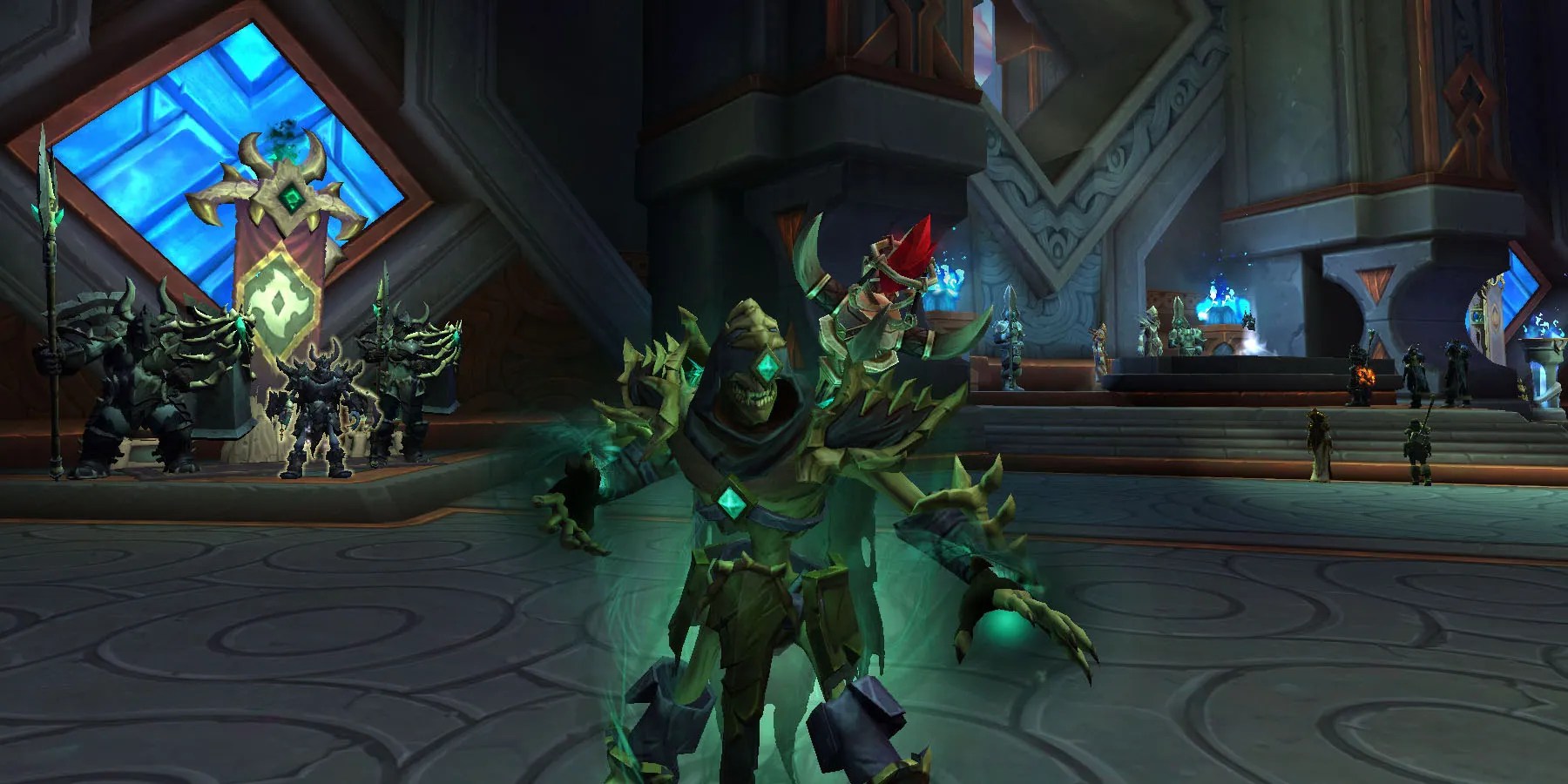Quick Links
TheMageofWorld of Warcraftremains one of the most flexible utility spellcasters. Contrary to otherWarcraftstaples such as the Warlock and the Cleric, the Mage prides itself in its utility. After all, not all spellcasters inWorld of Warcraftcan create food and water, just as much as they can transform enemies into sheep. These are on top of devastatingly-powerful burst spells and direct damage spells, depending on whether the Mage in question focuses on arcane magic, fire magic, and even ice magic.
RELATED:World of Warcraft: Dragonflight- Possible New Allied Races
Through the years, thisWarcraftClass boasts one of the most helpful DPS/Support units players could find in the game. Should they need someone right in the middle of efficient damage and buffs, then the Mage is certainly the Class to get. However, how much did the Mage change throughout the MMO’s expansions?
Classic: Utility Kiters
Perhaps considered as theOG kiters in theWorld of Warcraftmeta,Mages inClassicare immediately recognized for their strong utility, immediately giving them potential for survivability due to how efficient their attacks are regardless of whether players focus on mere crowd control or if they want to go crazy with AOE or single-target damage with relatively safety, something also popularly called kiting.
Not only that, but key to the Mage’s expertise are some of their signature utilities. These include Teleport and Portal Spells that may allow entire party members to traverse regions with mere spells. Likewise, Conjure Food and Drink can save players bag space by having a Mage create healing potions on the fly. And most importantly, Polymorph is probably the single-most iconic spell of the Class, primarily for its ability to transform targets into sheep.

Burning Crusade: Maintaining Solid Damage, Solid Utility
While Mages maintain a status assolid damage dealers inThe Burning Crusade, one key difference in their participating in theWorld of Warcraftstory against Illidan Stormrage is how their combat mechanics are slightly adjusted. No longer do Mages need to rely on the same sets of keybinds anymore, as the Mages receive better support as damage units.
Of course, Mages still fall behind powerhouses such as Warlocks and Hunters due to their lack of overall damage. However, being accompanied by excellent supports such as a Shadow Priest or a constant stream of mana can make Mages into pure DPS nightmares for enemies. Either way, they now come with a nifty Intelligence buff with Arcane Intellect, decent crowd control with Frost Nova and Polymorph, and even provide continuous healing with no effort through Conjure Refreshment Table. Lastly, even Spellsteal, which is a buff-stealer, may debilitate enemies in PVP.

Wrath Of The Lich King: Shuffle DPS Specs
Thanks to the addition of Glyphs, Mages remain a powerhouse for overall damage throughout Lich King Arthas Menethil’s devastation acrosstheWrath of the Lich Kingexpansionin theWorld of Warcraftstoryline. This time around, Mages will enjoy a bit more versatility with their skill trees, with Specs now giving more room for synergistic movement and alteration in order to have Mages fully invest in them for different experiences. However, the placement of Mages in parties do rely on overall composition due to their lack of damage oomph (versus Warlocks) and healing support (Priest). In turn, Mages aren’t advised to be in melee-heavy teams as their slower cooldowns may have Mages in danger.
Either way, Mages retain solo potential throughWrathcourtesy of how Specs are more flexible. For instance, the Arcane Mage will likely dominate around halfway through the expansion, with Fire Mages only overcoming the Spec at around the Icecrown Citadel raid series. This is because Arcane focuses more on single-target damage while Fire is more tailored to AOE. This time around, Frost is retooled to focus more on PVP as well as farming.

Cataclysm: Breaking Away From Glass Cannons
Now that Deathwing poses to make a return to Azerothin theCataclysmexpansionof theWorld of Warcraftstory, Mages can finally break free from the stereotype of being glass cannons out of sheer lack of decent survivability despite being mid-to-high DPS. The new Mastery system aims to remove redundancies in abilities (i.e., Amplify Magic) while at the same time make builds more practical. For instance, the Arcane Focus Talent can now give back mana for missed spells, Pyromaniac can give Mages Haste when three (3) or more targets suffer from their damage-over-time spells, and Burnout can use health instead of mana in case of emergencies.
In addition to these Talents are Mastery options that build towards other playstyles. For instance, Mana Adept scales damage on how full the Mage’s mana is, encouraging them to use more potions. Likewise, Ignite now adds DOT to all Fire spells. Meanwhile, Deathfrost will have Frostbolt put buffs on every other Frost, Fire, and Arcane abilities in the Mage’s arsenal. More combat versatility comes in the form of newer spells, such as Flame Orb that damages targets while leaving Mages room to cast as soon as the ability is released. Lastly, Time Warp is a passive Haste that finally gives Mages the room they need to cast much faster, living up to their mobility potential.

Mists Of Pandaria: Flexibility Is The Name Of The Game
With both the Alliance and the Horde discovering the mystic island of Pandaria,Mists of Pandriahoped to introduce a lot of reworksto further cement the potential of Mages to enjoy personalized builds in theWorld of Warcraftexpansion. These included major overhauls to the Talent system, which now allowed players to choose Talents previously exclusive to single Specs, giving them more freedom to add dynamism to their builds.
RELATED:World of Warcraft: The Hardest Achievements To Get In Wrath Of The Lich King

This did give Mages more convenient access to Talents that further boost already-popular builds. Rotations that remained popular inMistsare often in PVE-dominant Fire, such as Fireball, Combustion, Pyroblast, and Inferno Blast. Meanwhile, AOE damage-dealers remain in go-to abilities such as Flamestrike, Blizzard, and Arcane Explosion. Frost remains the PVP-dominant spec inMists, with Ice Barrier’s defense and Frostburn’s damage bonuses remaining ever-reliable for Mages in the game.
Warlords Of Draenor: Ability Pruning For Streamlining
After a wild conflict sent both the Alliance and the Horde back in time at the height of Draenor,theWarlords of Draenorexpansionwill see both factions scramble to secure supremacy over the timeline. And while theWorld of Warcraftstory would inevitably see a “fixed” timeline, so too would Mages see a “fixing” in their overall approach to combat.Warlordswould see a lot of ability pruning for Mages, primarily to remove niche and unused abilities while further streamlining other abilities to be available to more focused Specs.
Interestingly developments include more passive Mage Armors to boost their survivability, and Mage Talents now giving players more room for specific AOE, single-target damage, and utility-focused builds. Another prominent case of streamlining here includes the new Mage Bomb Spell, which combines the previously-separated bombs (Frost Bomb, Living Bomb, Nether Tempest) into a single spell that changes its variation depending on the Spec used.

Legion: Refocusing On Rotations
With Sargeras bringing thefull force of the Burning Legionto Azeroth, Illidan Stormrage and his Demon Hunters become the new members of the world’s protectors. Keeping up with the trend of otherWorld of Warcraftexpansions, Mages also receive a bit of a readjustment forLegion, this time around having ability prunings focused on giving the spellcasters more room for purpose-driven Spec choice.
RELATED:World Of WarCraft: Best Leeroy Jenkins Memes From The Past
For instance, the damage-scaling mana-dependent Mana Adept was removed in lieu of the arcane charge-dependent Savant, allowing Mages to cast smaller Arcane Blasts to kill more targeted foes. Meanwhile, Fire Mages seem to enjoy more controllable damage as opposed to their RNG-based bursts with Combustion and more focused Inferno Blast. Lastly, Frost Mages remain PVP-dependent, with Frozen Orb being a rather suitable ereplacement for the loss of damage from Frostfire Bolt.
Battle For Azeroth: Here For The Raid, Staying For The Int Buff
After the defeat of the Burning Legion, it’s back to classicWarcrafttradition of Alliance versus Hordein theBattle for AzerothexpansioninWorld of Warcraft. Much of the changes across the Mage Class include a more focused take on single-target damage that expands depending on the Spec, as well as deeper focus on personal utility that emphasizes the Mage’s potential for solo play, albeit with a bit of a disadvantage in group performances.
Interesting too are how the Specs have adjusted forAzeroth. For instance, Frost Mages now have a core ability called the Ice Lance that is mostly useful outside rotations, with the Spec suffering for too much of a “decent” DPS with no room for progression. Likewise, Fire Mages enjoy the status of being the recent top dog in terms of damage, provided players can manage to stay patient with rather slow buildup in between Combustions. Lastly, Arcane Mages suffer the most in terms of damage output, as their limited burst windows mean they still need mana and Intelligence buffs to consistently pull off damage.

Shadowlands: Choose The Damage Output
With the boundary between life and death being torn asunderin theShadowlandsexpansionofWorld of Warcraft, Mages meet perhaps a culmination of their development, with Specs now being heavily-focused on the kind of damage output Mages can provide with their respective risks. This is extremely evident for the Arcane Mage, as they may enjoy high burst damage across different damage numbers, they do suffer from the need for proper lineups and even the lack of self-healing. Even overspending mana as thee Arcane Mage can be lethal when done incorrectly.
Likewise, Fire Mages enjoy sustained AOE damage and extremely powerful bursts, on top of decent survivability with their defensive punishers. However, they don’t have any reliable self-heals and damage reduction, as well as the need for enemies to be clustered together to be effective. Frost Mages, while deadly in single-target combat courtesy of high damage and excellent survivability, suffers from low burst and the need for consistent rotations, making them very timing-focused.

Dragonflight: All Of The Crowd Control
With Dragonflights about to makea return inWorld of Warcraft: Dragonflightto fight the threat of the Primal Incarnates. Thankfully for Mage players, they’re poised to contribute quite a huge deal to the fight with the number of changes coming their way. This time around, Mages will enjoy more crowd control options to supplement the existing focus on varied damage options.
At its core, Mages will enjoy more crowd control opportunities to maximize their utility options. Fori instance, Mass Polymorph will finally allow them to Polymorph multiple enemies at a time to stun them for much-needed recovery for the team. Likewise, Mass Slow can cripple the enemy’s offensive, with the Time Manipulation Talent further reducing CD of these utilities.

World Of Warcraft: Dragonflightis set for a June 28, 2025 release.
